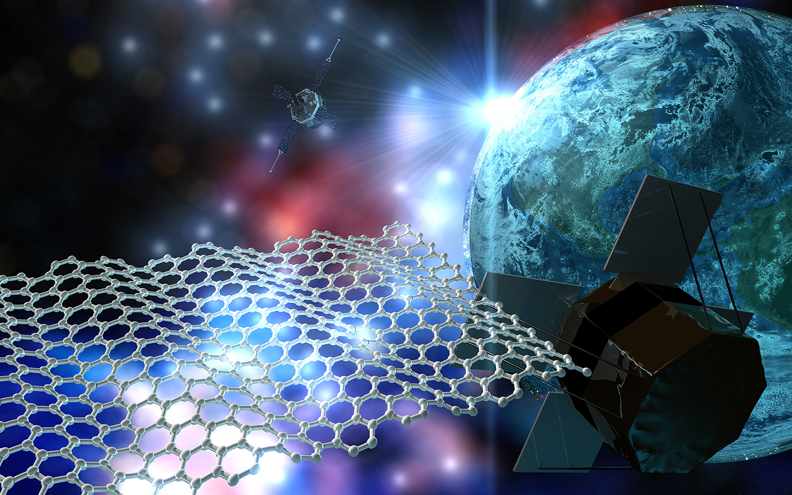Thin sheets of graphene may be used as light sails for spacecraft, a team of Delft PhD students asserts after experiments in weightlessness in Germany last week. In yet another microgravity experiment, students examined the properties of ferrofluids in space.
Team GrapheneX examined the use of graphene-based materials as solar sails for spacecraft propulsion. (Image: GrapheneX)
Once a year, ESA’s Education Office opens a call for Drop Your Thesis! proposals, in which teams of university students submit proposals for microgravity experiments. This year’s two winning teams were both comprised of students from TU Delft. Over the last 10 months they worked with experts from across Europe to develop their experiments. They subsequently tested them at the ZARM drop tower at the Center of Applied Space Technology and Micro gravity in Bremen.
To create extreme microgravity conditions, down to one millionth of the Earth’s gravitational force, both teams used a capsule containing their experimental setup and catapulted it up and down the 146 metre high tower, leading to 9.3 seconds of weightlessness.
‘The graphene moved ten times faster than we had expected’
Team GrapheneX, composed of four PhD students from Delft, examined the use of graphene-based materials as solar sails for spacecraft propulsion. The idea behind the GrapheneX project is to use light from the sun or a laser beam to transfer momentum to matter and displace sails made of graphene, a one atom thick allotrope of graphite, which has been extensively studied in the past decade. The material is very stiff and strong. During the experiments, which took place last week, the researchers shone laser light on free floating graphene membranes of a few millimetres in diameter and measured what happened to these membranes.
“We are very pleased with the results,” says Vera Janssen, one of the team members and PhD candidate at Dr Herre van Zant’s laboratory at the Faculty of Applied Sciences. “The graphene moved ten times faster than we had expected. In half a second it moved a couple of millimetres. A lot more work is needed before this technique can be used in space or before we can draw strong scientific conclusions. But for a first test it is quite good.”
A scientific paper is not in the making yet, however. “We need to perform more experiments before we can say for sure that the graphene moved due to the light particles pushing them. It may also have moved due to a temperature gradient, or pressure differences.”
Ferrofluids to steer satellites
The other group, the Ferros team, is composed of two master students from the University of Seville in Spain and one master student from Delft, Tim Hermans, of the Faculty of Aerospace Engineering. They investigated the behaviour of ferrofluids in microgravity. Ferrofluids are suspensions of magnetic nanoparticles in liquids. Their magnetic susceptibility is several orders of magnitude larger than that of other magnetic fluids, which makes ferrofluids very attractive in space. “You can use them to make cooling systems, for instance,” says Hermans, “or maybe to steer satellites. By creating a magnetic field inside a satellite one can change the angular momentum of the satellite by moving the ferrofluid towards certain parts of the satellite.”
The behaviour of ferrofluids in space is significantly different to that on Earth. On the ground, magnetically induced effects are strongly coupled to gravity effects, while surface tension becomes predominant in microgravity. “Computer models can provide a means to simulate this environment, but these models need to be validated with experimental measurements. With our findings we can do just that,” says Hermans, who has high hopes that ferrofluids may one day be used in space.
Related articles:



Comments are closed.